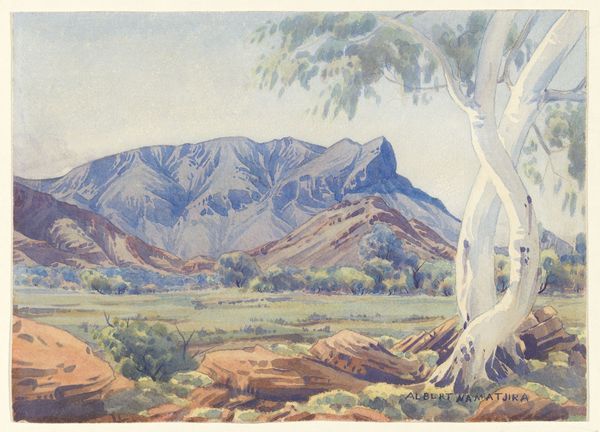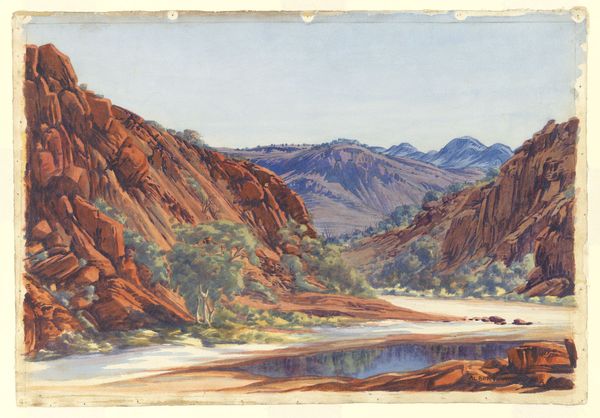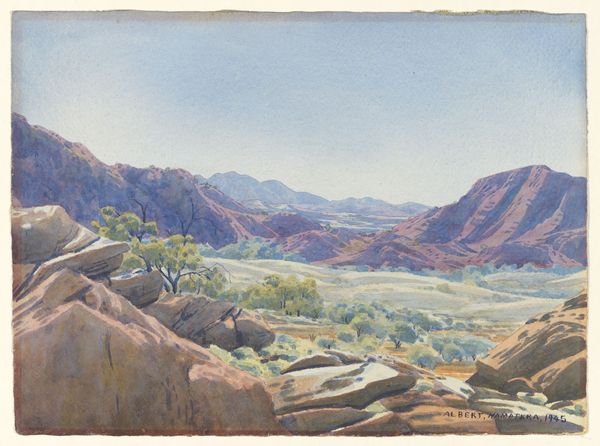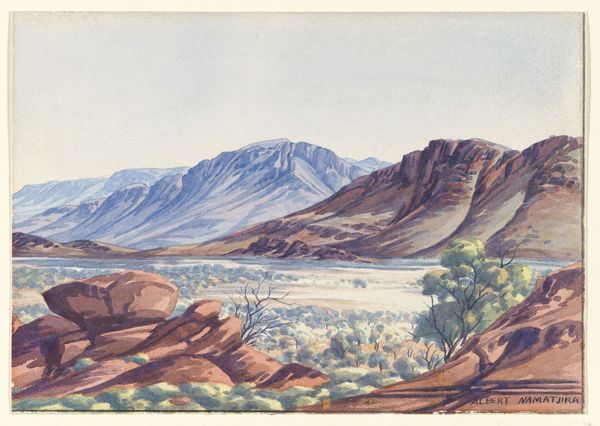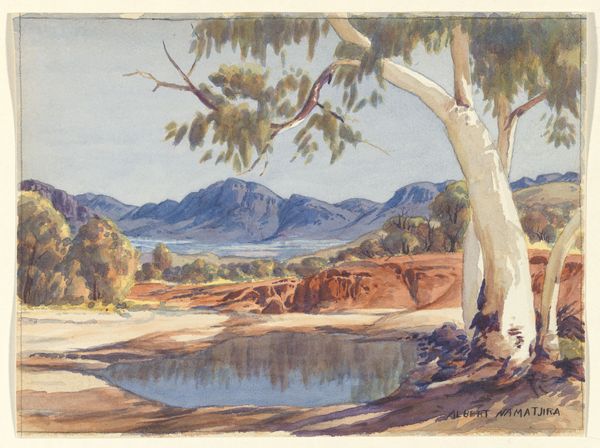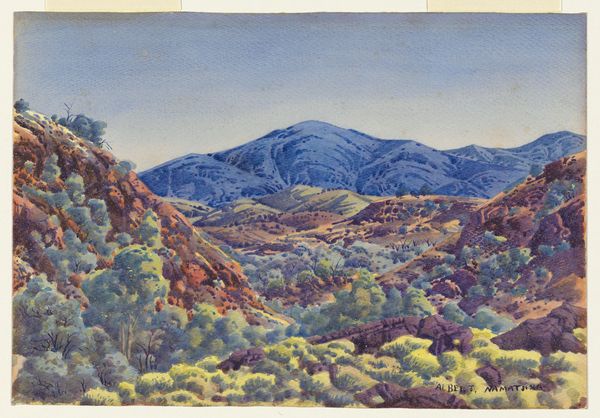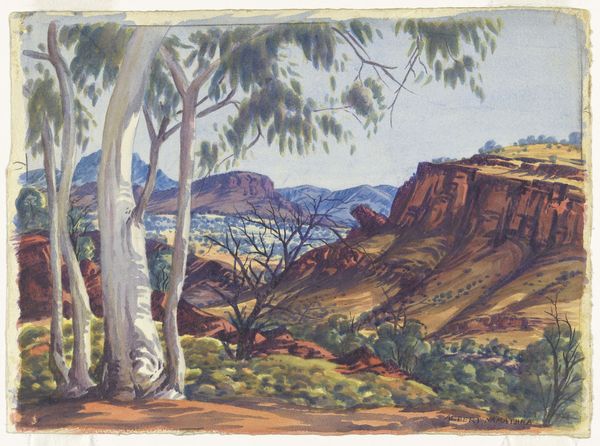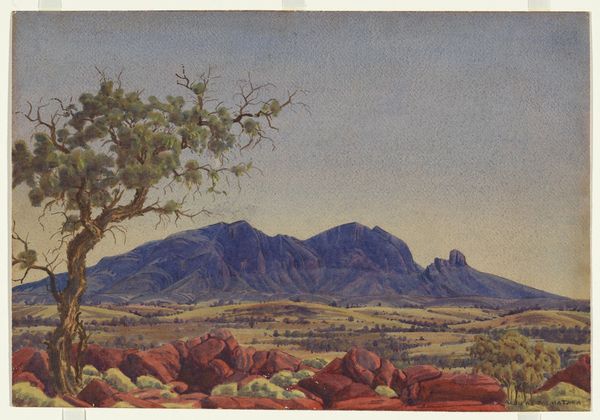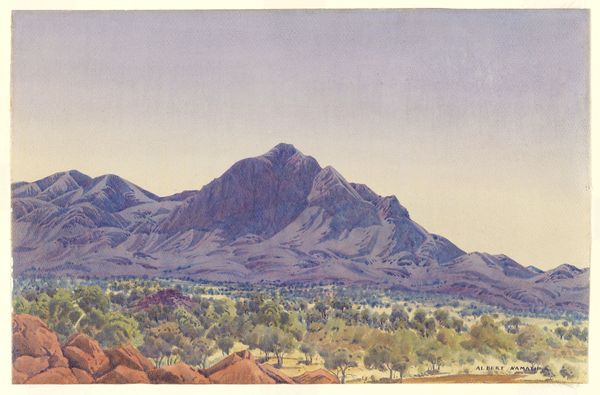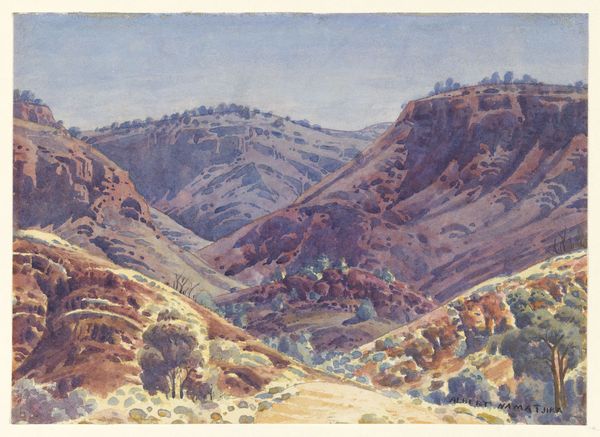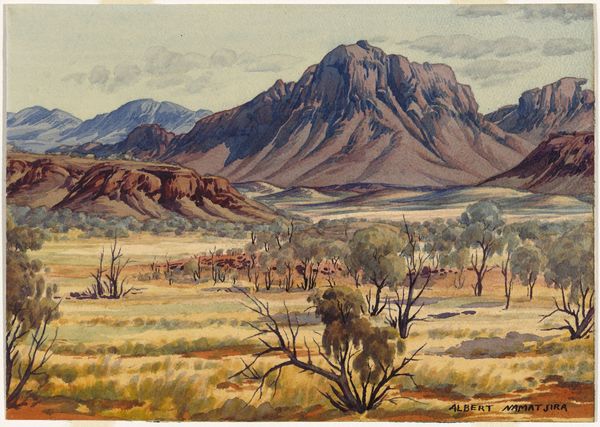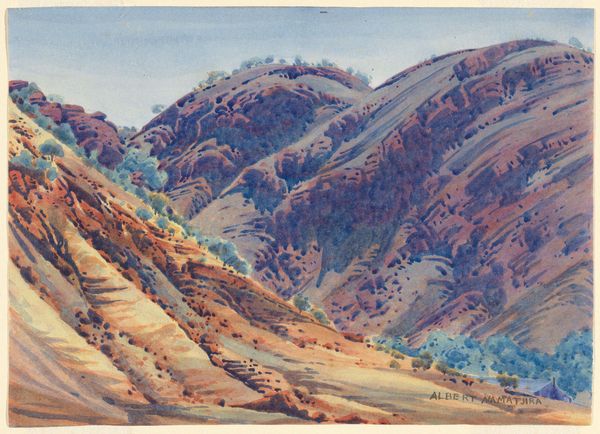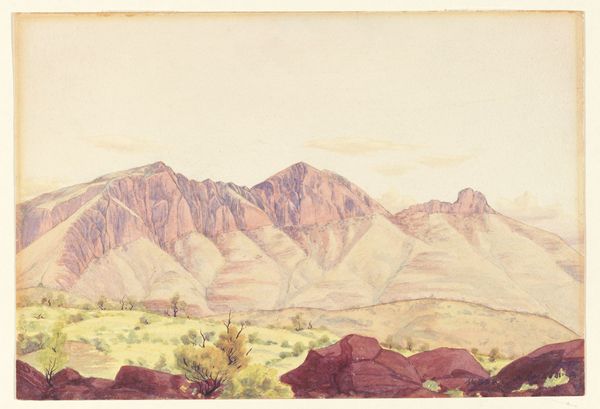
painting, plein-air, watercolor
#
painting
#
plein-air
#
landscape
#
oil painting
#
watercolor
#
coloured pencil
Copyright: Albert Namatjira,Fair Use
Curator: What a serene landscape. My eye immediately goes to the reflected sky in that still waterhole, so crisp it's like looking into another world. Editor: It’s quite striking. Let's tell our listeners they’re looking at Albert Namatjira's "Waterhole, MacDonnell Ranges," created around 1950. It offers such a fascinating, and sometimes fraught, entry point into thinking about Indigenous representation in Australian art. Curator: Fraught how? It just seems... idyllic. Editor: Well, that's precisely the thing. Namatjira’s work was celebrated – commodified, even – as this palatable, Westernised version of Aboriginal art, which then overshadowed other Indigenous artistic practices. And the romanticized depiction of the landscape… there’s an inherent tension there. Colonisation has radically altered the very landscapes he depicts. Curator: Hmmm. I get it. And I love that it's watercolour; so delicate yet vivid at the same time. He's somehow managed to capture the sheer vastness of the Australian outback in a relatively small frame. It's a powerful trick. Editor: His technique is masterful. But I find myself questioning who exactly these images were made *for*. The colonial gaze? Tourists wanting a souvenir? Or a deeper expression of connection to country? Curator: Maybe it was all of those things at once, you know? Art's rarely one thing, is it? It is nice that you can really feel his sense of place. I mean the colors are extraordinary, burnt oranges blending into cooler blues. It almost hums with heat. Editor: It does evoke a sense of place – no doubt about that. And perhaps that is where its power lies, regardless of the circumstances of its creation and reception. But the history... it’s essential to engage with. To resist a simple reading. Curator: I think you’re right. So, come for the beautiful shimmering colours and masterful rendering. Stay for the historical context! It all adds up to a much richer picture, doesn't it? Editor: Absolutely. Hopefully, visitors will walk away with a greater understanding of both the aesthetic qualities of the work and the complexities surrounding its cultural and historical significance.
Comments
No comments
Be the first to comment and join the conversation on the ultimate creative platform.
